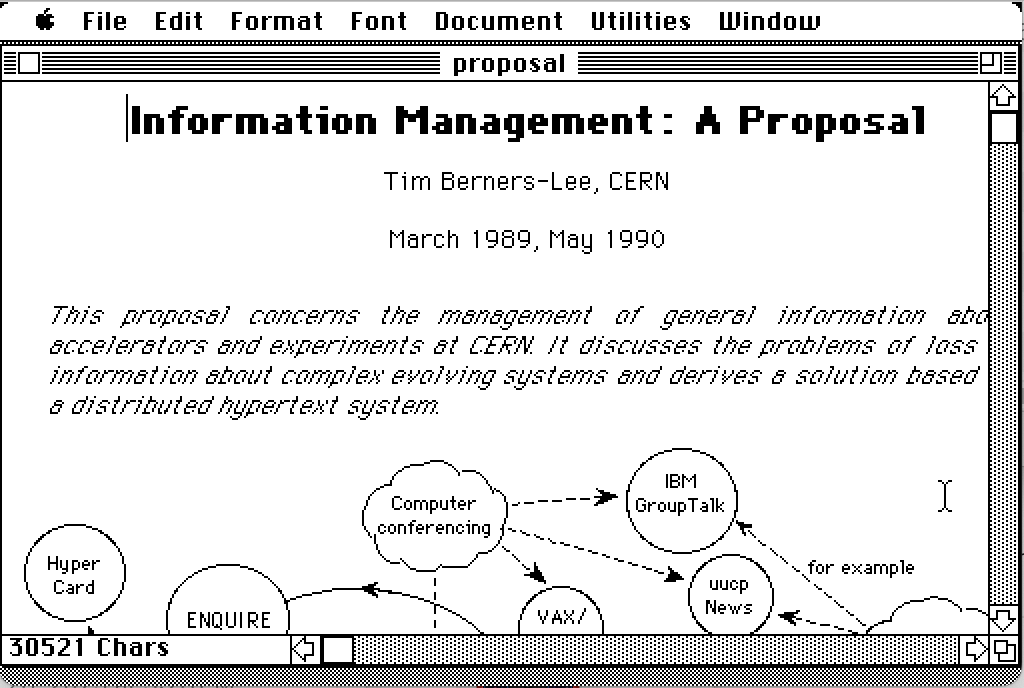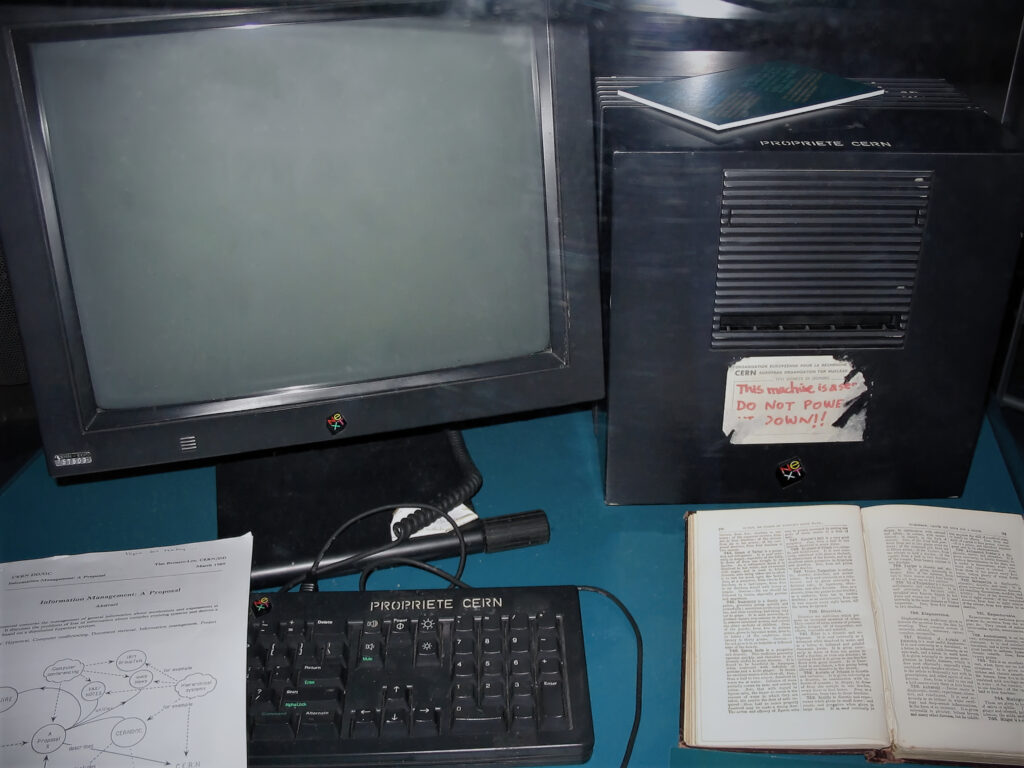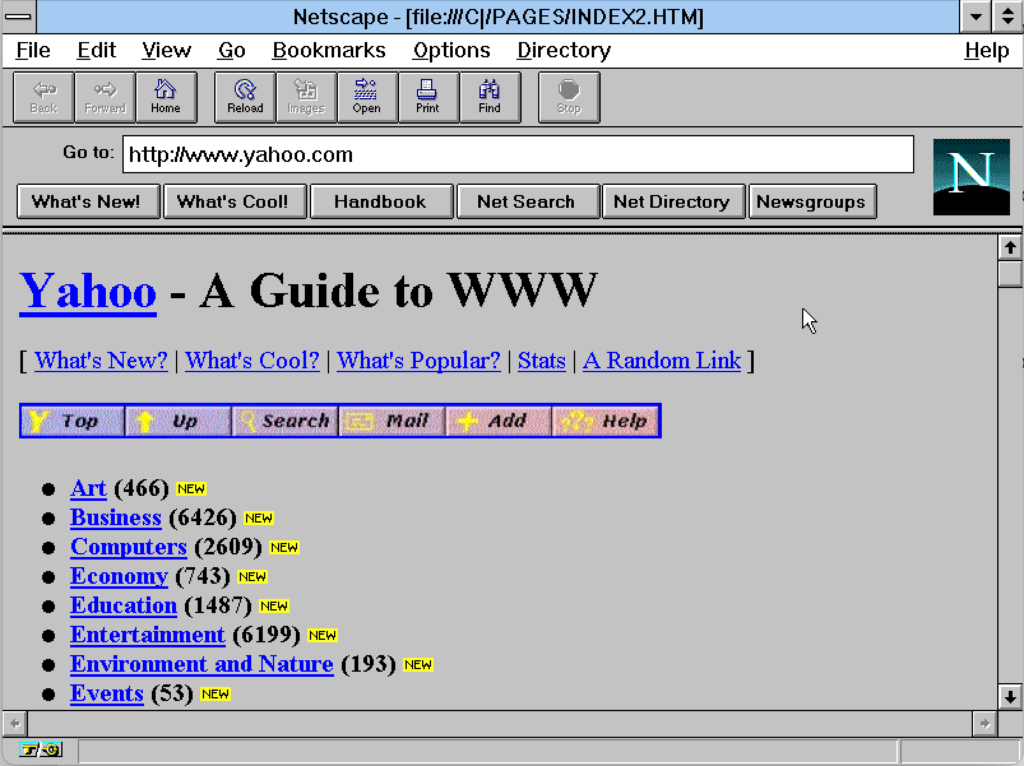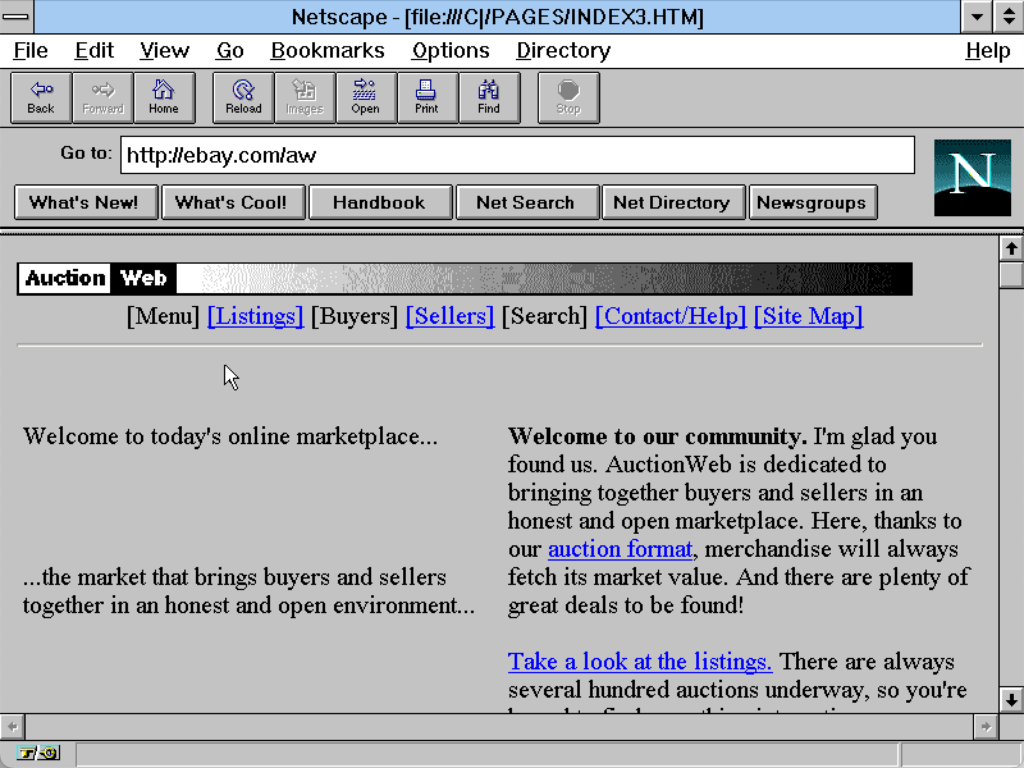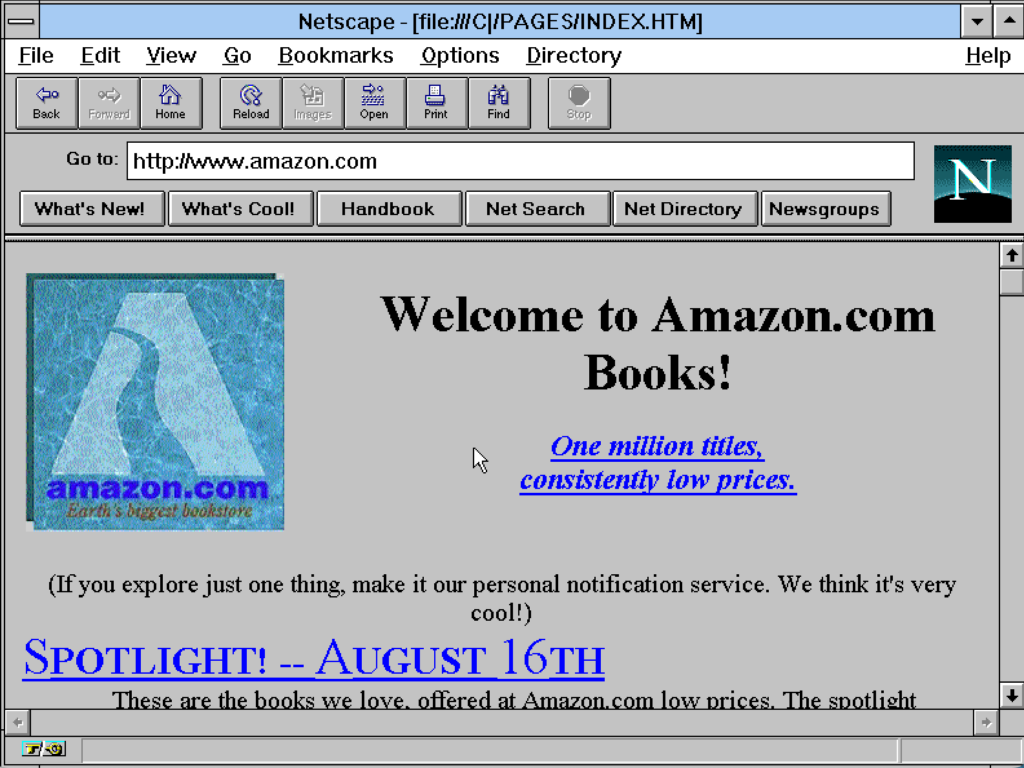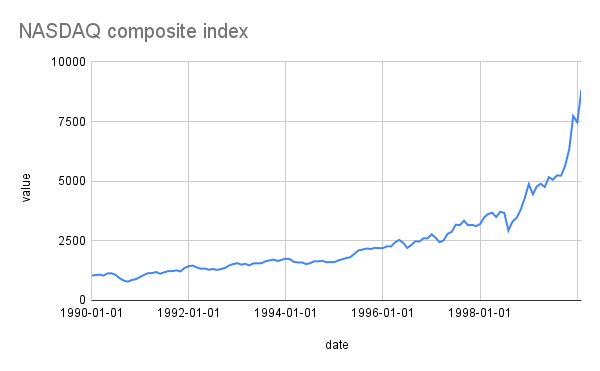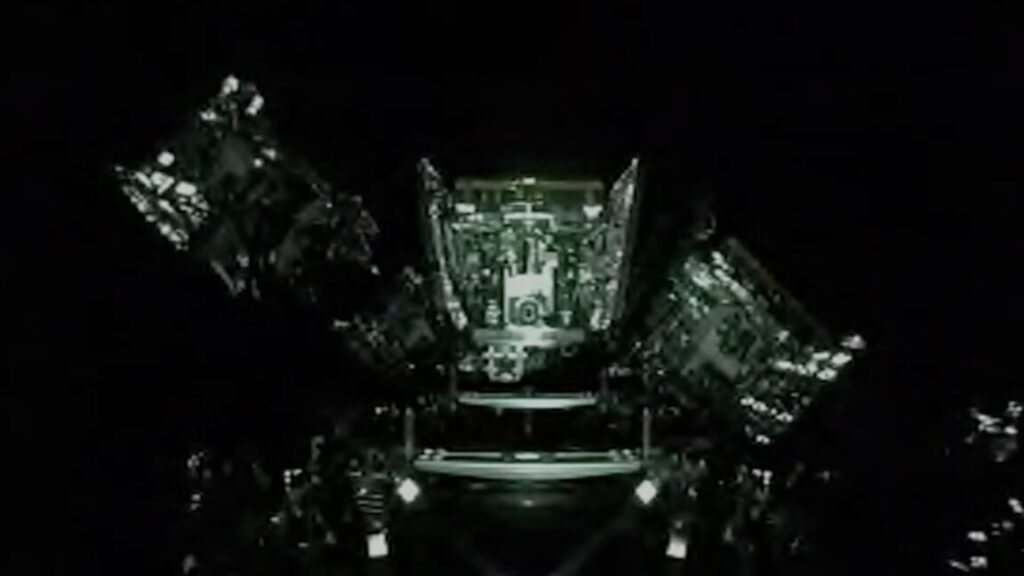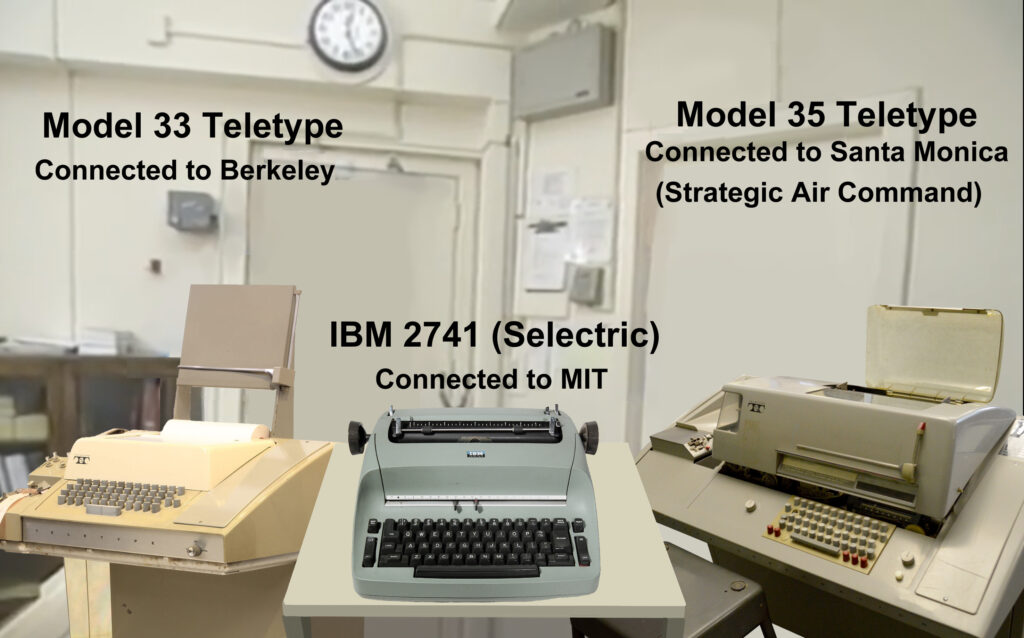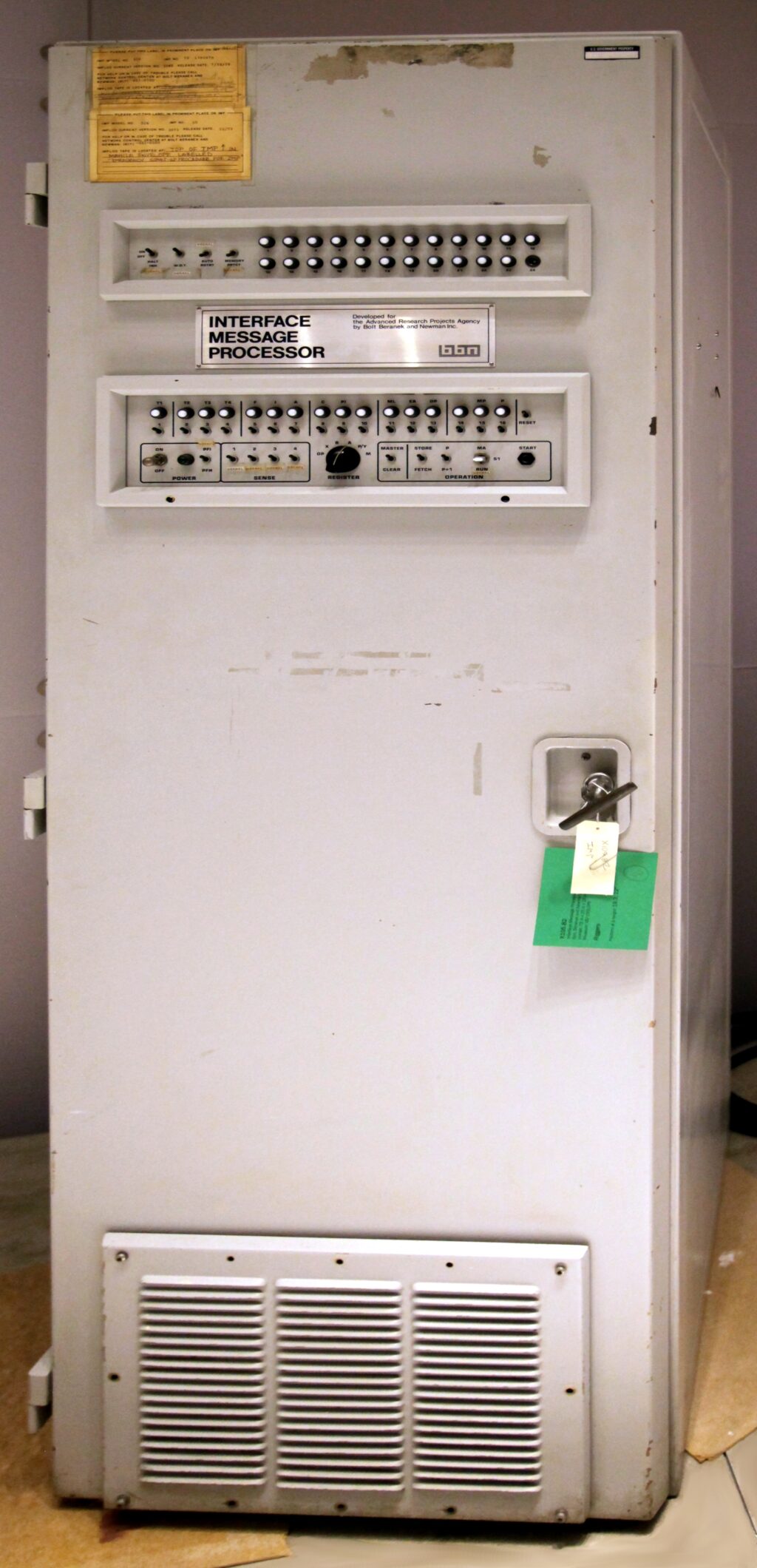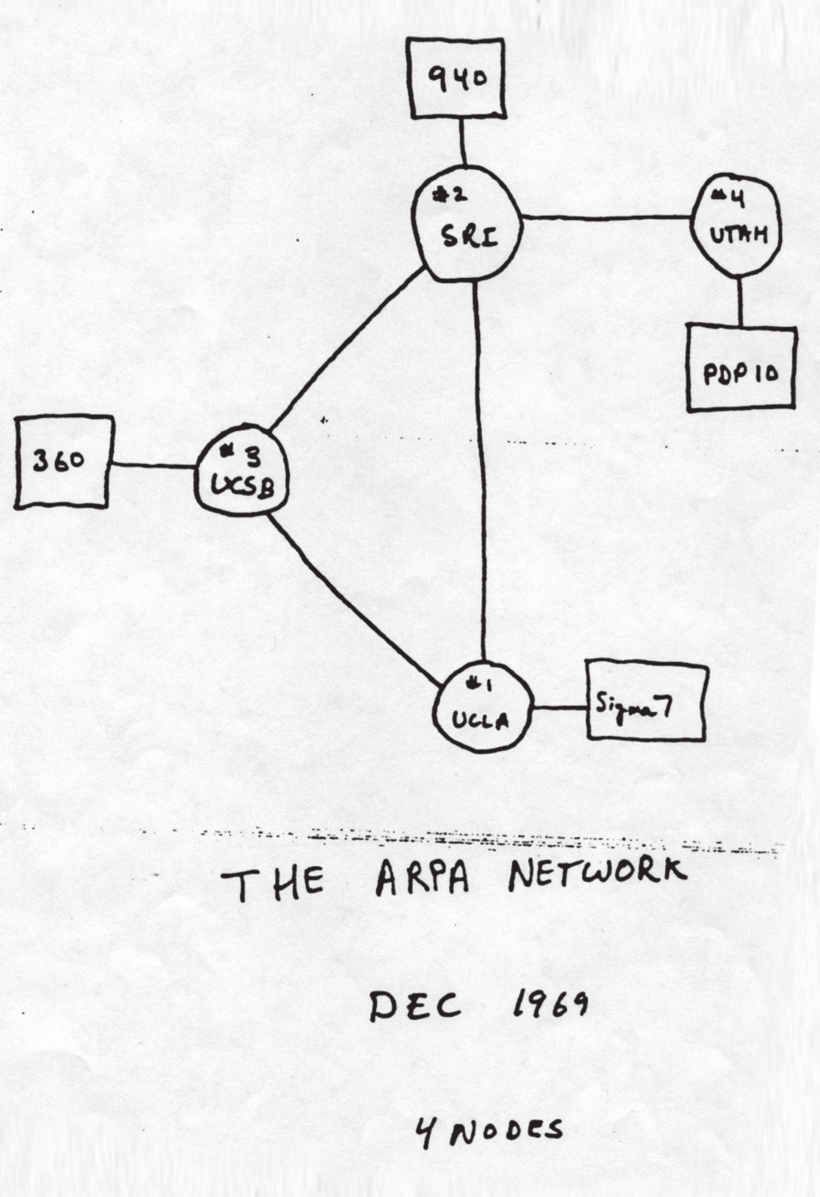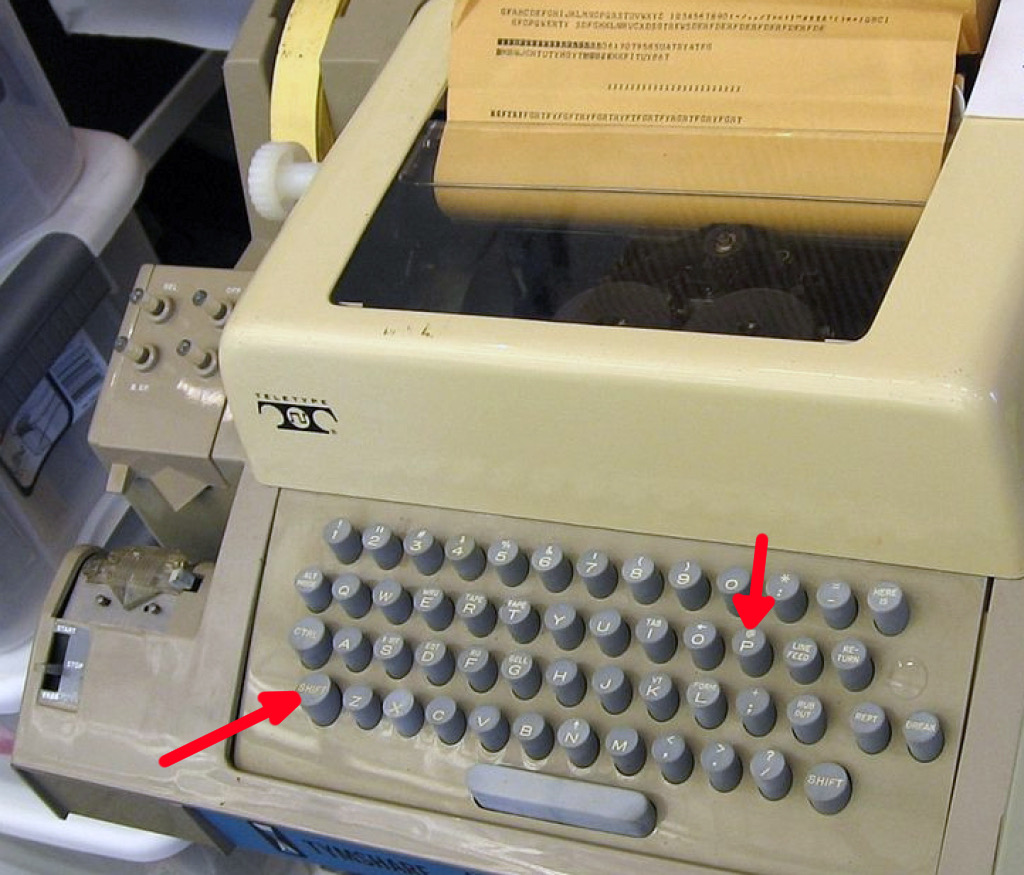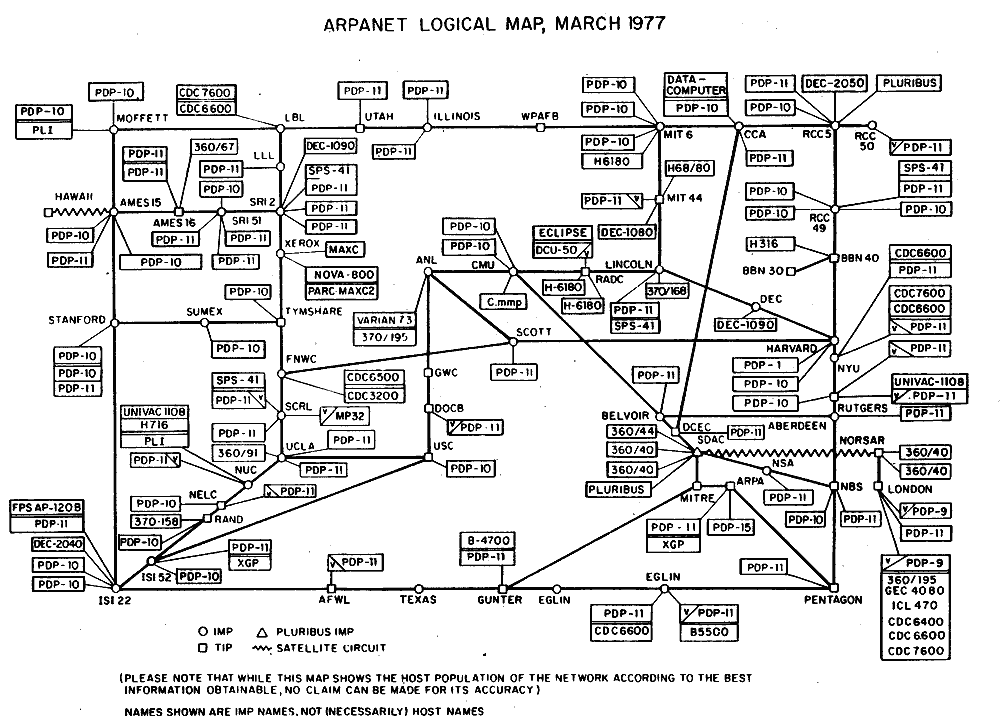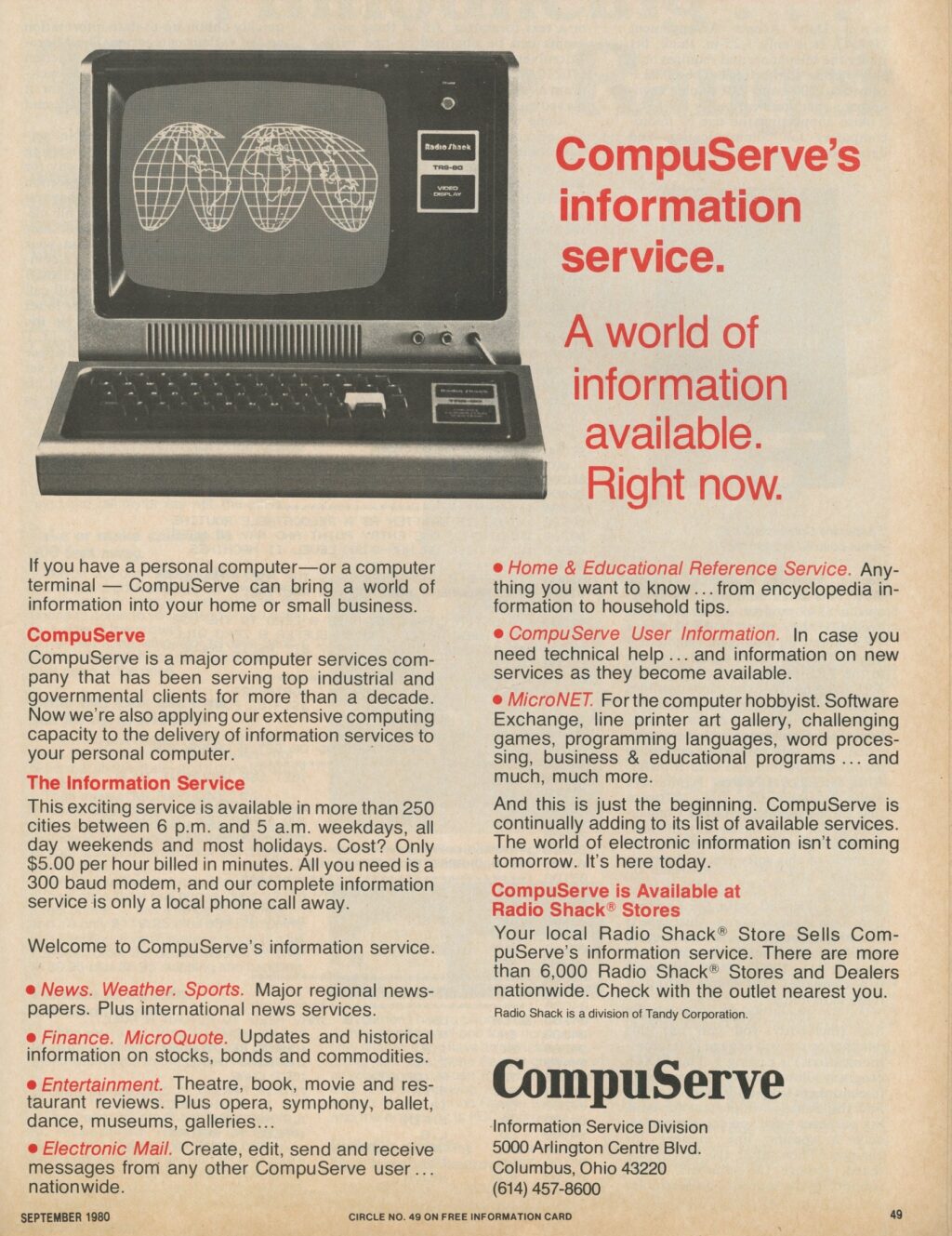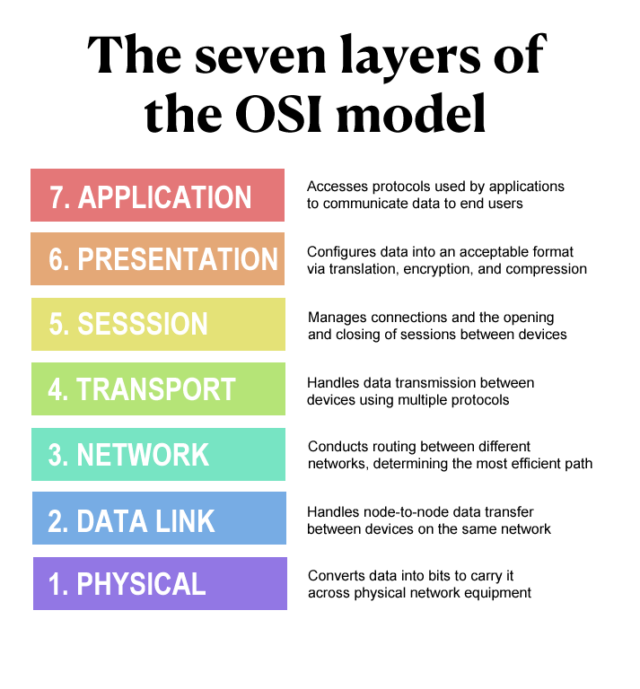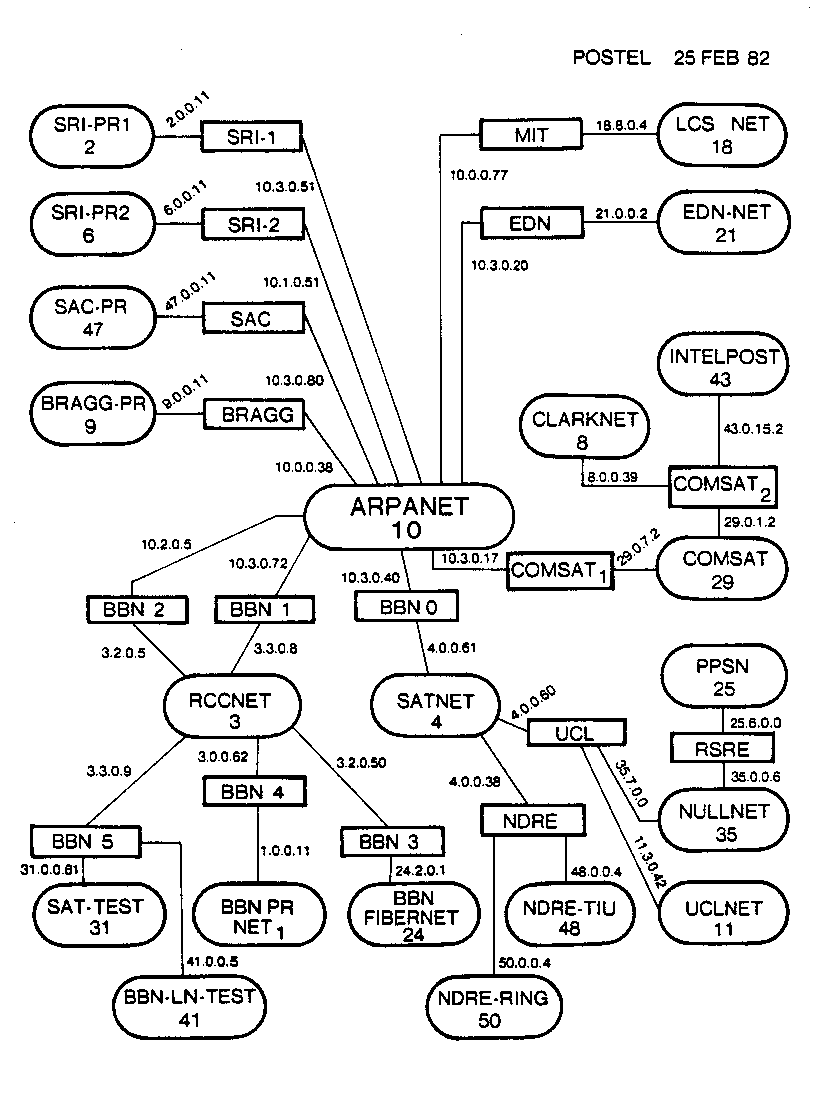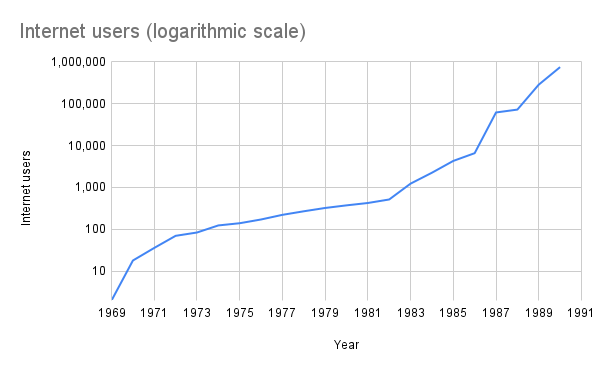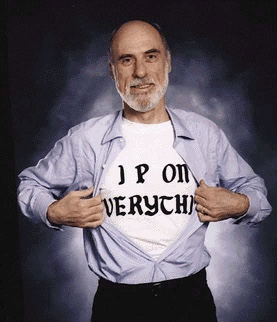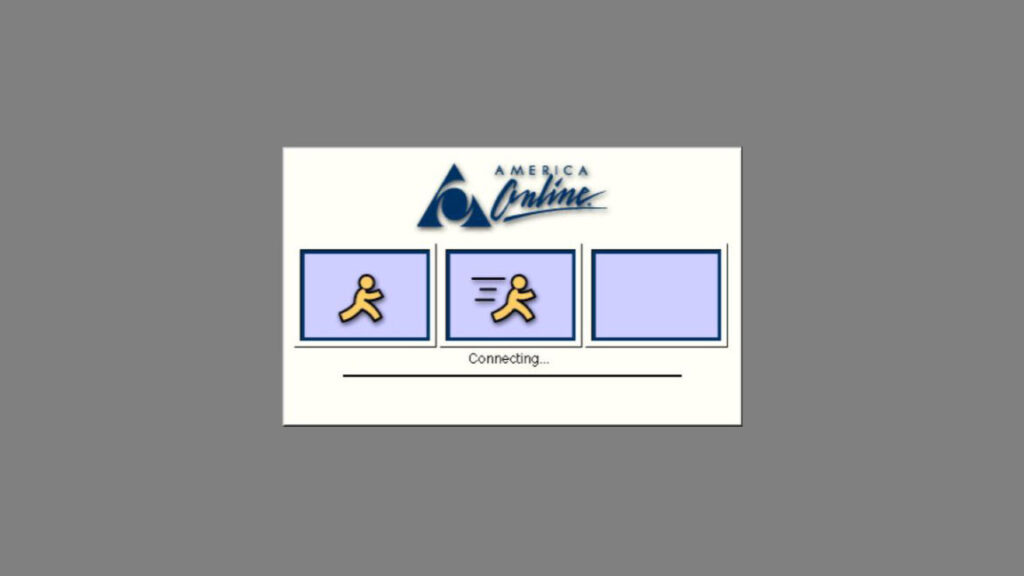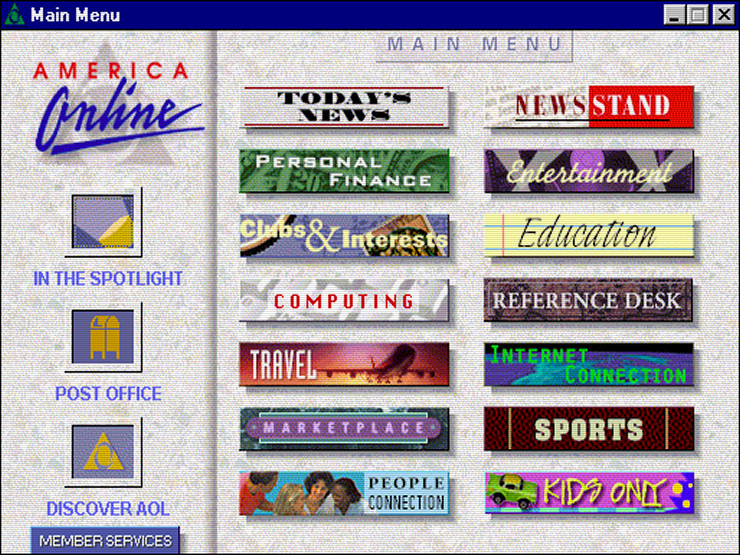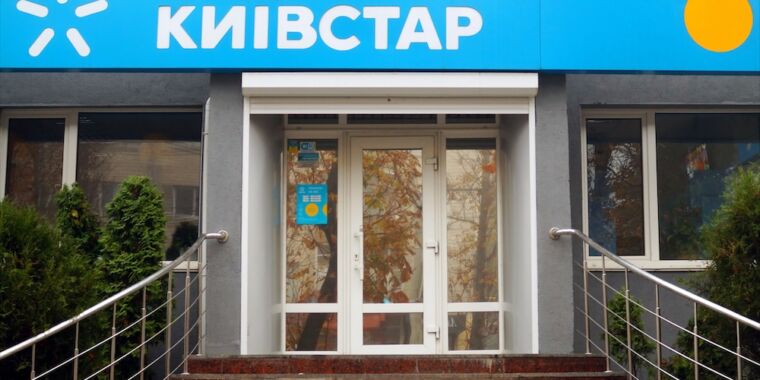A history of the Internet, part 3: The rise of the user
Welcome to the final article in our three-part series on the history of the Internet. If you haven’t already, catch up with part one and part two.
As a refresher, here’s the story so far:
The ARPANET was a project started by the Defense Department’s Advanced Research Project Agency in 1969 to network different mainframe computers together across the country. It later evolved into the Internet, connecting multiple global networks together using a common TCP/IP protocol. By the late 1980s, a small group of academics and a few curious consumers connected to each other on the Internet, which was still mostly text-based.
In 1991, Tim Berners-Lee invented the World Wide Web, an Internet-based hypertext system designed for graphical interfaces. At first, it ran only on the expensive NeXT workstation. But when Berners-Lee published the web’s protocols and made them available for free, people built web browsers for many different operating systems. The most popular of these was Mosaic, written by Marc Andreessen, who formed a company to create its successor, Netscape. Microsoft responded with Internet Explorer, and the browser wars were on.
The web grew exponentially, and so did the hype surrounding it. It peaked in early 2001, right before the dotcom collapse that left most web-based companies nearly or completely bankrupt. Some people interpreted this crash as proof that the consumer Internet was just a fad. Others had different ideas.
Larry Page and Sergey Brin met each other at a graduate student orientation at Stanford in 1996. Both were studying for their PhDs in computer science, and both were interested in analyzing large sets of data. Because the web was growing so rapidly, they decided to start a project to improve the way people found information on the Internet.
They weren’t the first to try this. Hand-curated sites like Yahoo had already given way to more algorithmic search engines like AltaVista and Excite, which both started in 1995. These sites attempted to find relevant webpages by analyzing the words on every page.
Page and Brin’s technique was different. Their “BackRub” software created a map of all the links that pages had to each other. Pages on a given subject that had many incoming links from other sites were given a higher ranking for that keyword. Higher-ranked pages could then contribute a larger score to any pages they linked to. In a sense, this was a like a crowdsourcing of search: When people put “This is a good place to read about alligators” on a popular site and added a link to a page about alligators, it did a better job of determining that page’s relevance than simply counting the number of times the word appeared on a page.
Step 1 of the simplified BackRub algorithm. It also stores the position of each word on a page, so it can make a further subset for multiple words that appear next to each other. Jeremy Reimer.
Creating a connected map of the entire World Wide Web with indexes for every word took a lot of computing power. The pair filled their dorm rooms with any computers they could find, paid for by a $10,000 grant from the Stanford Digital Libraries Project. Many were cobbled together from spare parts, including one with a case made from imitation LEGO bricks. Their web scraping project was so bandwidth-intensive that it briefly disrupted the university’s internal network. Because neither of them had design skills, they coded the simplest possible “home page” in HTML.
In August 1996, BackRub was made available as a link from Stanford’s website. A year later, Page and Brin rebranded the site as “Google.” The name was an accidental misspelling of googol, a term coined by a mathematician’s young son to describe a 1 with 100 zeros after it. Even back then, the pair was thinking big.
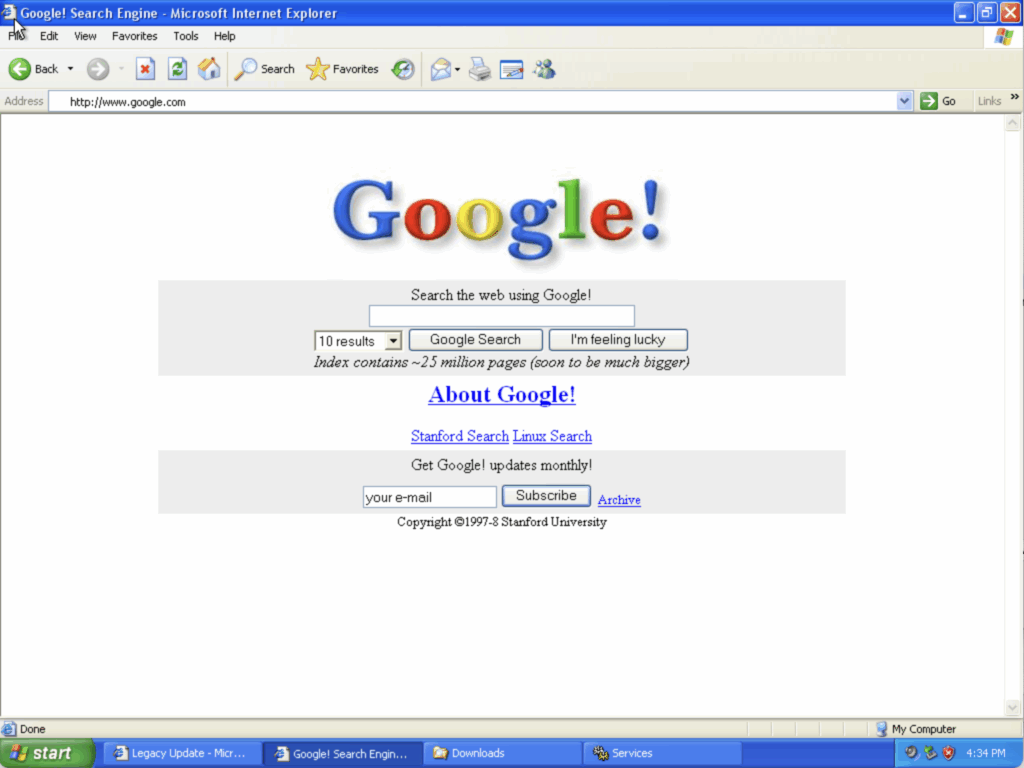
Google.com as it appeared in 1998. Credit: Jeremy Reimer
By mid-1998, their prototype was getting over 10,000 searches a day. Page and Brin realized they might be onto something big. It was nearing the height of the dotcom mania, so they went looking for some venture capital to start a new company.
But at the time, search engines were considered passée. The new hotness was portals, sites that had some search functionality but leaned heavily into sponsored content. After all, that’s where the big money was. Page and Brin tried to sell the technology to AltaVista for $1 million, but its parent company passed. Excite also turned them down, as did Yahoo.
Frustrated, they decided to hunker down and keep improving their product. Brin created a colorful logo using the free GIMP paint program, and they added a summary snippet to each result. Eventually, the pair received $100,000 from angel investor Andy Bechtolsheim, who had co-founded Sun Microsystems. That was enough to get the company off the ground.
Page and Brin were careful with their money, even after they received millions more from venture capitalist firms. They preferred cheap commodity PC hardware and the free Linux operating system as they expanded their system. For marketing, they relied mostly on word of mouth. This allowed Google to survive the dotcom crash that crippled its competitors.
Still, the company eventually had to find a source of income. The founders were concerned that if search results were influenced by advertising, it could lower the usefulness and accuracy of the search. They compromised by adding short, text-based ads that were clearly labeled as “Sponsored Links.” To cut costs, they created a form so that advertisers could submit their own ads and see them appear in minutes. They even added a ranking system so that more popular ads would rise to the top.
The combination of a superior product with less intrusive ads propelled Google to dizzying heights. In 2024, the company collected over $350 billion in revenue, with $112 billion of that as profit.
Information wants to be free
The web was, at first, all about text and the occasional image. In 1997, Netscape added the ability to embed small music files in the MIDI sound format that would play when a webpage was loaded. Because the songs only encoded notes, they sounded tinny and annoying on most computers. Good audio or songs with vocals required files that were too large to download over the Internet.
But this all changed with a new file format. In 1993, researchers at the Fraunhofer Institute developed a compression technique that eliminated portions of audio that human ears couldn’t detect. Suzanne Vega’s song “Tom’s Diner” was used as the first test of the new MP3 standard.
Now, computers could play back reasonably high-quality songs from small files using software decoders. WinPlay3 was the first, but WinAmp, released in 1997, became the most popular. People started putting links to MP3 files on their personal websites. Then, in 1999, Shawn Fanning released a beta of a product he called Napster. This was a desktop application that relied on the Internet to let people share their MP3 collection and search everyone else’s.

Napster as it would have appeared in 1999. Credit: Jeremy Reimer
Napster almost immediately ran into legal challenges from the Recording Industry Association of America (RIAA). It sparked a debate about sharing things over the Internet that persists to this day. Some artists agreed with the RIAA that downloading MP3 files should be illegal, while others (many of whom had been financially harmed by their own record labels) welcomed a new age of digital distribution. Napster lost the case against the RIAA and shut down in 2002. This didn’t stop people from sharing files, but replacement tools like eDonkey 2000, Limewire, Kazaa, and Bearshare lived in a legal gray area.
In the end, it was Apple that figured out a middle ground that worked for both sides. In 2003, two years after launching its iPod music player, Apple announced the Internet-only iTunes Store. Steve Jobs had signed deals with all five major record labels to allow legal purchasing of individual songs—astoundingly, without copy protection—for 99 cents each, or full albums for $10. By 2010, the iTunes Store was the largest music vendor in the world.
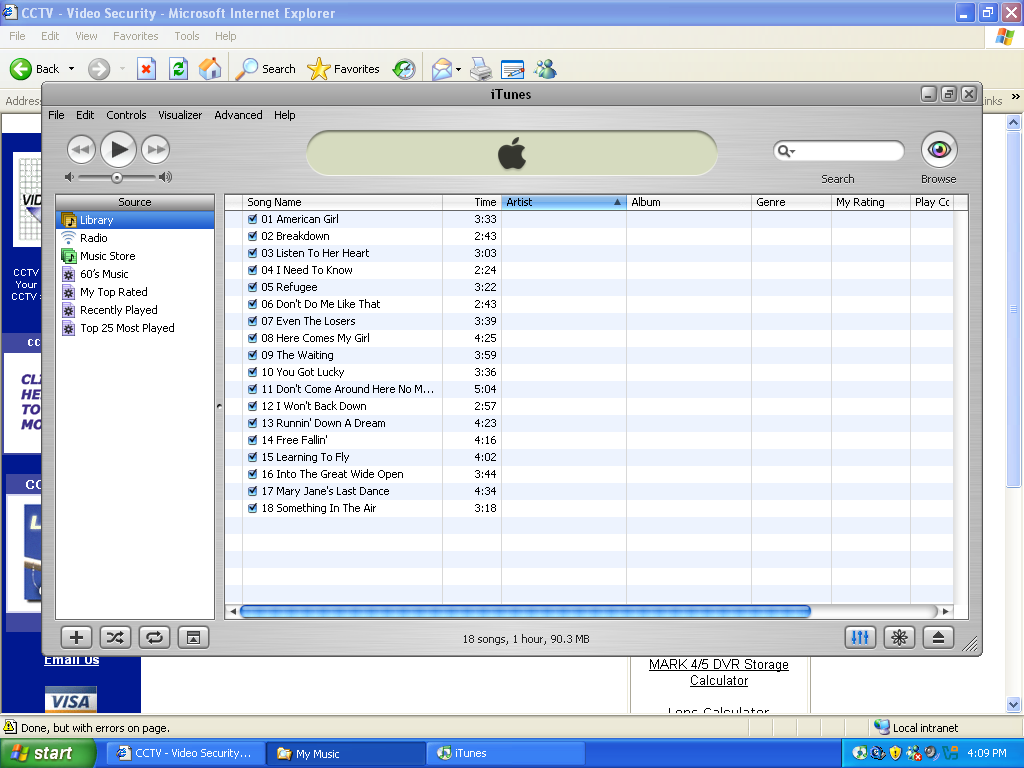
iTunes 4.1, released in 2003. This was the first version for Windows and introduced the iTunes Store to a wider world. Credit: Jeremy Reimer
The Web turns 2.0
Tim Berners-Lee’s original vision for the web was simply to deliver and display information. It was like a library, but with hypertext links. But it didn’t take long for people to start experimenting with information flowing the other way. In 1994, Netscape 0.9 added new HTML tags like FORM and INPUT that let users enter text and, using a “Submit” button, send it back to the web server.
Early web servers didn’t know what to do with this text. But programmers developed extensions that let a server run programs in the background. The standardized “Common Gateway Interface” (CGI) made it possible for a “Submit” button to trigger a program (usually in a /cgi-bin/ directory) that could do something interesting with the submission, like talking to a database. CGI scripts could even generate new webpages dynamically and send them back to the user.
This intelligent two-way interaction changed the web forever. It enabled things like logging into an account on a website, web-based forums, and even uploading files directly to a web server. Suddenly, a website wasn’t just a page that you looked at. It could be a community where groups of interested people could interact with each other, sharing both text and images.
Dynamic webpages led to the rise of blogging, first as an experiment (some, like Justin Hall’s and Dave Winer’s, are still around today) and then as something anyone could do in their spare time. Websites in general became easier to create with sites like Geocities and Angelfire, which let people build their own personal dream house on the web for free. A community-run dynamic linking site, webring.org, connected similar websites together, encouraging exploration.
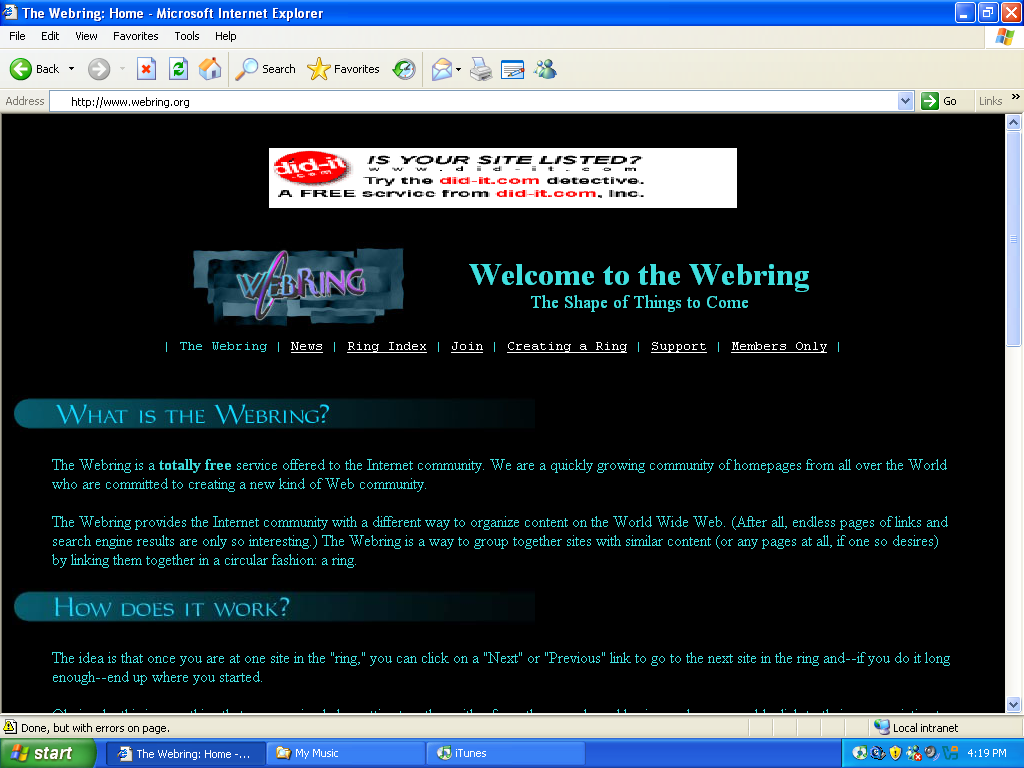
Webring.org was a free, community-run service that allowed dynamically updated webrings. Credit: Jeremy Reimer
One of the best things to come out of Web 2.0 was Wikipedia. It arose as a side project of Nupedia, an online encyclopedia founded by Jimmy Wales, with articles written by volunteers who were subject matter experts. This process was slow, and the site only had 21 articles in its first year. Wikipedia, in contrast, allowed anyone to contribute and review articles, so it quickly outpaced its predecessor. At first, people were skeptical about letting random Internet users edit articles. But thanks to an army of volunteer editors and a set of tools to quickly fix vandalism, the site flourished. Wikipedia far surpassed works like the Encyclopedia Britannica in sheer numbers of articles while maintaining roughly equivalent accuracy.
Not every Internet innovation lived on a webpage. In 1988, Jarkko Oikarinen created a program called Internet Relay Chat (IRC), which allowed real-time messaging between individuals and groups. IRC clients for Windows and Macintosh were popular among nerds, but friendlier applications like PowWow (1994), ICQ (1996), and AIM (1997) brought messaging to the masses. Even Microsoft got in on the act with MSN Messenger in 1999. For a few years, this messaging culture was an important part of daily life at home, school, and work.

A digital recreation of MSN Messenger from 2001. Sadly, Microsoft shut down the servers in 2014. Credit: Jeremy Reimer
Animation, games, and video
While the web was evolving quickly, the slow speeds of dial-up modems limited the size of files you could upload to a website. Static images were the norm. Animation only appeared in heavily compressed GIF files with a few frames each.
But a new technology blasted past these limitations and unleashed a torrent of creativity on the web. In 1995, Macromedia released Shockwave Player, an add-on for Netscape Navigator. Along with its Director software, the combination allowed artists to create animations based on vector drawings. These were small enough to embed inside webpages.
Websites popped up to support this new content. Newgrounds.com, which started in 1995 as a Neo-Geo fan site, started collecting the best animations. Because Director was designed to create interactive multimedia for CD-ROM projects, it also supported keyboard and mouse input and had basic scripting. This meant that people could make simple games that ran in Shockwave. Newgrounds eagerly showcased these as well, giving many aspiring artists and game designers an entry point into their careers. Super Meat Boy, for example, was first prototyped on Newgrounds.

Newgrounds as it would have appeared circa 2003. Credit: Jeremy Reimer
Putting actual video on the web seemed like something from the far future. But the future arrived quickly. After the dotcom crash of 2001, there were many unemployed web programmers with a lot of time on their hands to experiment with their personal projects. The arrival of broadband with cable modems and digital subscriber lines (DSL), combined with the new MPEG4 compression standard, made a lot of formerly impossible things possible.
In early 2005, Chad Hurley, Steve Chen, and Jawed Karim launched Youtube.com. Initially, it was meant to be an online dating site, but that service failed. The site, however, had great technology for uploading and playing videos. It used Macromedia’s Flash, a new technology so similar to Shockwave that the company marketed it as Shockwave Flash. YouTube allowed anybody to upload videos up to ten minutes in length for free. It became so popular that Google bought it a year later for $1.65 billion.
All these technologies combined to provide ordinary people with the opportunity, however brief, to make an impact on popular culture. An early example was the All Your Base phenomenon. An animated GIF of an obscure, mistranslated Sega Genesis game inspired indie musicians The Laziest Men On Mars to create a song and distribute it as an MP3. The popular humor site somethingawful.com picked it up, and users in the Photoshop Friday forum thread created a series of humorous images to go along with the song. Then in 2001, the user Bad_CRC took the song and the best of the images and put them together in an animation they shared on Newgrounds. The YouTube version gained such wide popularity that it was reported on by USA Today.
You have no chance to survive make your time.
Media goes social
In the early 2000s, most websites were either blogs or forums—and frequently both. Forums had multiple discussion boards, both general and specific. They often leaned into a specific hobby or interest, and anyone with that interest could join. There were also a handful of dating websites, like kiss.com (1994), match.com (1995), and eHarmony.com (2000), that specifically tried to connect people who might have a romantic interest in each other.
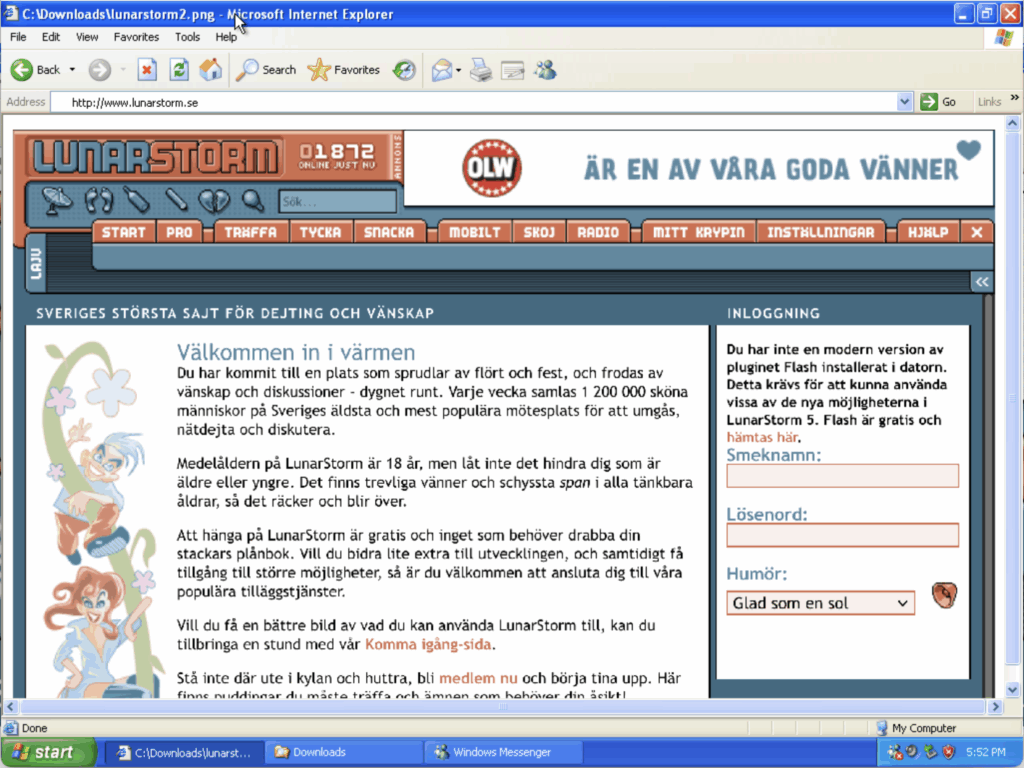
The Swedish Lunarstorm was one of the first social media websites. Credit: Jeremy Reimer
The road to social media was a hazy and confusing merging of these two types of websites. There was classmates.com (1995) that served as a way to connect with former school chums, and the following year, the Swedish site lunarstorm.com opened with this mission:
Everyone has their own website called Krypin. Each babe [this word is an accurate translation] has their own Krypin where she or he introduces themselves, posts their diaries and their favorite files, which can be anything from photos and their own songs to poems and other fun stuff. Every LunarStormer also has their own guestbook where you can write if you don’t really dare send a LunarEmail or complete a Friend Request.
In 1997, sixdegrees.com opened, based on the truism that everyone on earth is connected with six or fewer degrees of separation. Its About page said, “Our free networking services let you find the people you want to know through the people you already know.”
By the time friendster.com opened its doors in 2002, the concept of “friending” someone online was already well established, although it was still a niche activity. LinkedIn.com, launched the following year, used the excuse of business networking to encourage this behavior. But it was MySpace.com (2003) that was the first to gain significant traction.
MySpace was initially a Friendster clone written in just ten days by employees at eUniverse, an Internet marketing startup founded by Brad Greenspan. It became the company’s most successful product. MySpace combined the website-building ability of sites like GeoCities with social networking features. It took off incredibly quickly: in just three years, it surpassed Google as the most visited website in the United States. Hype around MySpace reached such a crescendo that Rupert Murdoch purchased it in 2005 for $580 million.
But a newcomer to the social media scene was about to destroy MySpace. Just as Google crushed its competitors, this startup won by providing a simpler, more functional, and less intrusive product. TheFaceBook.com began as Mark Zuckerberg and his college roommate’s attempt to replace their college’s online directory. Zuckerberg’s first student website, “Facemash,” had been created by breaking into Harvard’s network, and its sole feature was to provide “Hot or Not” comparisons of student photos. Facebook quickly spread to other universities, and in 2006 (after dropping the “the”), it was opened to the rest of the world.

“The” Facebook as it appeared in 2004. Credit: Jeremy Reimer
Facebook won the social networking wars by focusing on the rapid delivery of new features. The company’s slogan, “Move fast and break things,” encouraged this strategy. The most prominent feature, added in 2006, was the News Feed. It generated a list of posts, selected out of thousands of potential updates for each user based on who they followed and liked, and showed it on their front page. Combined with a technique called “infinite scrolling,” first invented for Microsoft’s Bing Image Search by Hugh E. Williams in 2005, it changed the way the web worked forever.
The algorithmically generated News Feed created new opportunities for Facebook to make profits. For example, businesses could boost posts for a fee, which would make them appear in news feeds more often. These blurred the lines between posts and ads.
Facebook was also successful in identifying up-and-coming social media sites and buying them out before they were able to pose a threat. This was made easier thanks to Onavo, a VPN that monitored its users’ activities and resold the data. Facebook acquired Onavo in 2013. It was shut down in 2019 due to continued controversy over the use of private data.
Social media transformed the Internet, drawing in millions of new users and starting a consolidation of website-visiting habits that continues to this day. But something else was about to happen that would shake the Internet to its core.
Don’t you people have phones?
For years, power users had experimented with getting the Internet on their handheld devices. IBM’s Simon phone, which came out in 1994, had both phone and PDA features. It could send and receive email. The Nokia 9000 Communicator, released in 1996, even had a primitive text-based web browser.
Later phones like the Blackberry 850 (1999), the Nokia 9210 (2001), and the Palm Treo (2002), added keyboards, color screens, and faster processors. In 1999, the Wireless Application Protocol (WAP) was released, which allowed mobile phones to receive and display simplified, phone-friendly pages using WML instead of the standard HTML markup language.

Browsing the web on phones was possible before modern smartphones, but it wasn’t easy. Credit: James Cridland (Flickr)
But despite their popularity with business users, these phones never broke into the mainstream. That all changed in 2007 when Steve Jobs got on stage and announced the iPhone. Now, every webpage could be viewed natively on the phone’s browser, and zooming into a section was as easy as pinching or double-tapping. The one exception was Flash, but a new HTML 5 standard promised to standardize advanced web features like animation and video playback.
Google quickly changed its Android prototype from a Blackberry clone to something more closely resembling the iPhone. Android’s open licensing structure allowed companies around the world to produce inexpensive smartphones. Even mid-range phones were still much cheaper than computers. This technology allowed, for the first time, the entire world to become connected through the Internet.
The exploding market of phone users also propelled the massive growth of social media companies like Facebook and Twitter. It was a lot easier now to snap a picture of a live event with your phone and post it instantly to the world. Optimists pointed to the remarkable events of the Arab Spring protests as proof that the Internet could help spread democracy and freedom. But governments around the world were just as eager to use these new tools, except their goals leaned more toward control and crushing dissent.
The backlash
Technology has always been a double-edged sword. But in recent years, public opinion about the Internet has shifted from being mostly positive to increasingly negative.
The combination of mobile phones, social media algorithms, and infinite scrolling led to the phenomenon of “doomscrolling,” where people spend hours every day reading “news” that is tuned for maximum engagement by provoking as many people as possible. The emotional toil caused by doomscrolling has been shown to cause real harm. Even more serious is the fallout from misinformation and hate speech, like the genocide in Myanmar that an Amnesty International report claims was amplified on Facebook.
As companies like Google, Amazon, and Facebook grew into near-monopolies, they inevitably lost sight of their original mission in favor of a never-ending quest for more money. The process, dubbed enshittification by Cory Doctorow, shifts the focus first from users to advertisers and then to shareholders.
Chasing these profits has fueled the rise of generative AI, which threatens to turn the entire Internet into a sea of soulless gray soup. Google is now forcing AI summaries at the top of web searches, which reduce traffic to websites and often provide dangerous misinformation. But even if you ignore the AI summaries, the sites you find underneath may also be suspect. Once-trusted websites have laid off staff and replaced them with AI, generating an endless series of new articles written by nobody. A web where AIs comment on AI-generated Facebook posts that link to AI-generated articles, which are then AI-summarized by Google, seems inhuman and pointless.
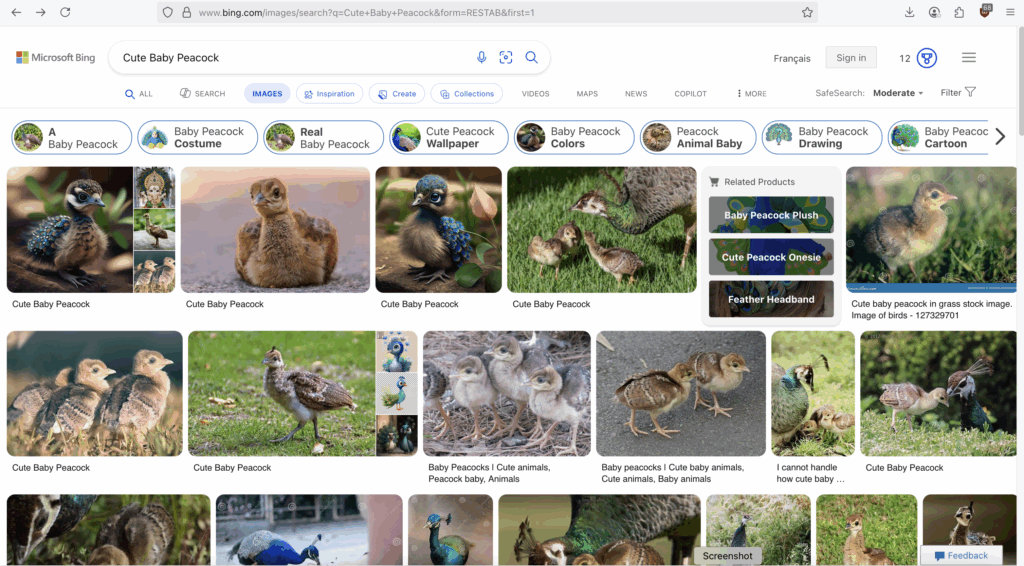
A search for cute baby peacocks on Bing. Some of them are real, and some aren’t. Credit: Jeremy Reimer
Where from here?
The history of the Internet can be roughly divided into three phases. The first, from 1969 to 1990, was all about the inventors: people like Vint Cerf, Steve Crocker, and Robert Taylor. These folks were part of a small group of computer scientists who figured out how to get different types of computers to talk to each other and to other networks.
The next phase, from 1991 to 1999, was a whirlwind that was fueled by entrepreneurs, people like Jerry Yang and Jeff Bezos. They latched on to Tim Berners-Lee’s invention of the World Wide Web and created companies that lived entirely in this new digital landscape. This set off a manic phase of exponential growth and hype, which peaked in early 2001 and crashed a few months later.
The final phase, from 2000 through today, has primarily been about the users. New companies like Google and Facebook may have reaped the greatest financial rewards during this time, but none of their successes would have been possible without the contributions of ordinary people like you and me. Every time we typed something into a text box and hit the “Submit” button, we created a tiny piece of a giant web of content. Even the generative AIs that pretend to make new things today are merely regurgitating words, phrases, and pictures that were created and shared by people.
There is a growing sense of nostalgia today for the old Internet, when it felt like a place, and the joy of discovery was around every corner. “Using the old Internet felt like digging for treasure,” said YouTube commenter MySoftCrow. “Using the current Internet feels like getting buried alive.”
Ars community member MichaelHurd added his own thoughts: “I feel the same way. It feels to me like the core problem with the modern Internet is that websites want you to stay on them for as long as possible, but the World Wide Web is at its best when sites connect to each other and encourage people to move between them. That’s what hyperlinks are for!”
Despite all the doom surrounding the modern Internet, it remains largely open. Anyone can pay about $5 per month for a shared Linux server and create a personal website containing anything they can think of, using any software they like, even their own. And for the most part, anyone, on any device, anywhere in the world, can access that website.
Ultimately, the fate of the Internet depends on the actions of every one of us. That’s why I’m leaving the final words in this series of articles to you. What would your dream Internet of the future look and feel like? The comments section is open.
A history of the Internet, part 3: The rise of the user Read More »





